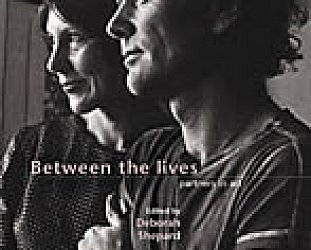Graham Reid | | 4 min read

The child looks strange somehow. There is something you cannot put your finger on. The head slightly too big, the pupils of the eyes a little too penetrating, perhaps? The image radiates silence, yet this odd little girl is about to beat a drum.
And that one over there, the child looking out of a window. It just doesn't look right, almost as if it is a photograph of a child standing in front of a painting of a window with a landscape beyond.
These are the works of Loretta Lux, the 35-year-old Dresden-born artist: eerily still, minimal and vaguely disturbing photographs.
Lux, trained as a painter and raised by grandparents who introduced her to the works of the Old Masters, began photographing children only six years ago.
Yet she brings to her work the painter's eye - and the history of painting - which sometimes suggests Victorian portraiture and, at other times, has the dislocating calm of a Rene Magritte painting.
Her work has drawn critics to note that the children are "as charming as they are creepy" (The Village Voice) and that "they have the air of self-created beings, a race of tiny Nordic monsters" (New York Times). 
Odd the subjects may be, but prints of Lux's work have sold out at international exhibitions and she has been described as a rising star in the art world.
She professes mixed emotions at the reaction she has received. "On the one hand, I was surprised to see people react to the work so strongly because the pictures were so personal to me. On the other hand, I am happy about it because I apparently hit on something existential."
Lux's subjects, usually the children of friends, are dressed and sometimes given odd but symbolic props - a fish, a loaf of bread - then photographed under even, shadowless light. The results are faces and skin which have pale complexions and the visual resonance of porcelain.
Then the work begins. Using Adobe PhotoShop software technology, Lux sometimes slightly manipulates the scale of the heads, hands or torso, and places the child's image into a plain backdrop which she may have painted herself.
The result can suggest Victorian portraiture. But Lux will float the child in space against a featureless background. The children become dissociated from time and, by virtue of the technique, from the context. They float, slightly surreal, in a nowhere world.
Her props may have religious connotations but she also finds other more personal resonances in them. Girl With a Loaf of Bread came from the Hansel and Gretel story she heard as a child. The Fish refers to a favourite toy she used to carry when she was small.
Lux is a product of her generation - she favours email interviews and uses PhotoShop, which was invented 15 years ago this month - but her work invites older and more traditional artistic references.
Her digitalised dolls, as they have been described, have their origins in portrait works by Raphael, Goya, Velasquez and Botticelli, and she also acknowledges the mystical atmosphere she conjures up has its counterpart in paintings from the Romantic Movement, notably by Casper David Friedrich.
Yet something in the work is also disconcertingly modern: the wide-eyed expression brings to mind the young actor Haley Joel Osment in The Sixth Sense, the silent but powerful children in the 1960 horror film Village of the Damned, or images from Japanese manga.
The sheen of blemish-free perfection, unusual period costume, and the subject's unwavering gaze - combined with the small scale of the works which invite close inspection - draw in observers but at the same time keep them emotionally distant.
Yet though these are works of art and a refined eye, they owe their appearance to the techniques of commercial photography.
PhotoShop has been a much abused technique which has allowed the juxtaposition of disparate elements - George W. Bush holding hands with film-maker Michael Moore in the posters for Fahrenheit 9-11 for example.
It has become an indispensable tool of advertising agencies. Yet, as with David Byrne recently using PowerPoint to create an exhibition at the George Eastman photography museum in New York, Lux has taken the technology in an unexpected direction, that of minimalism. 
By removing non-essential elements, by subtly rearranging proportion, and pasting the result against neutral spaces, she allows observers to provide the context and narrative for themselves. It is hardly surprising then that her work has people calling up a litany of sources and references which ironically, on less close examination, may not be there at all.
Not all her work is quite so effective. At The Rose Garden (2001) has a sentimental quality which is unusual in her otherwise emotionally dry work. Yet even here the elements of scale and context are not quite reconciled. Here, too, the viewer is invited in by the charm of a child in a garden but pushed away by the girl's emotional absence.
Lux's lack of sentiment about childhood, her representation of children as ciphers for other ideas, and the recontextualisation of the core image fit neatly within the notion that childhood is that part of life which can only be understood in retrospect. And Lux has taken the iconography of it and delivered it in a new, and often sad and perplexing way.
"They look lost because that is how I see life," says Lux of her subjects. "I think we are all a bit lost, lost in a world we can't understand."
Yet, however distant the subjects seem, they are also enchanting. That dreamlike state of childhood which eludes us as we become older remains here in images which are silent, slightly surreal and are - as the artist describes them - "imaginary portraits dealing with the idea of childhood".







Tokyo Art Guy - Feb 11, 2009
You nailed it perfectly. I like her work and you gave good insight into what she does. I always have an uncomfortable feeling when I see her work. T.A.G>
Savepost a comment